创建 Github 拉取请求
本示例说明如何使用 Jenkins 管道从 Port 内部打开 GitHub 仓库中的拉取请求。
工作流程包括在 Terraform 的 "main.tf "文件中添加一个资源块,然后在 GitHub 上生成修改 PR。 在此特定实例中,添加的资源是 Azure 云中的一个存储账户。
- 本指南假定您已拥有 Port 帐户并具备使用 Port 的基本知识。如果您还没有这样做,请继续完成quickstart 。 **设置本指南中将被用于的 "服务 "蓝图。
- 你将需要一个 GitHub 仓库,用来放置本指南中要用到的文件。如果你没有,我们推荐你使用名为 "Port-actions "的creating a new repository 。
- Generic Webhook Trigger - 该插件使 Jenkins 能够根据传入的 HTTP 请求接收和触发作业,从 JSON 或 XML 有效负载中提取数据,并将其作为变量提供。
示例 - 修改 main.tf 以添加资源块
设置动作的前端
- 前往 Port 应用程序中的Self-service tab ,点击 "+ 新操作"。
- Port 中的每个操作都与蓝图直接相关。我们的操作将创建一个与服务关联的资源,并作为服务 CD 流程的一部分进行供应。
从下拉列表中选择 "服务"。
3.此操作不会创建/删除实体,而是对现有实体执行操作。因此,我们将选择 "Day-2 "作为操作类型。
像这样填写表格,然后单击 "下一步":

4.我们希望使用此操作的开发人员能指定简单的输入,而不是被 Azure 存储账户的所有可用配置弄得不知所措。对于此操作,我们将定义一个名称和一个位置。
单击 "+ 新输入",像这样填写表格,然后单击 "创建":
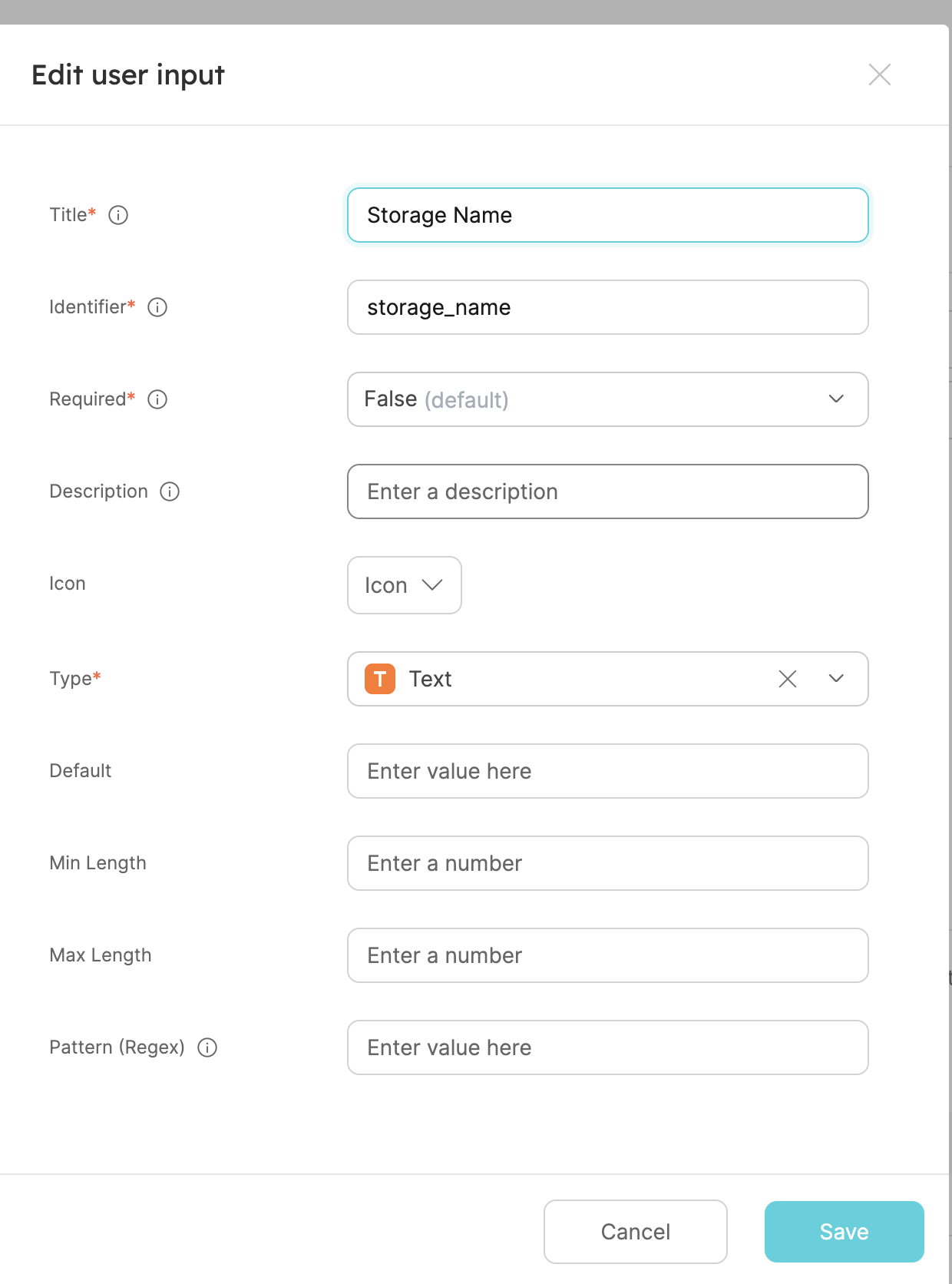
5.现在,让我们创建资源的位置输入。
点击 "+ 新输入",像这样填写表格,然后点击 "创建":
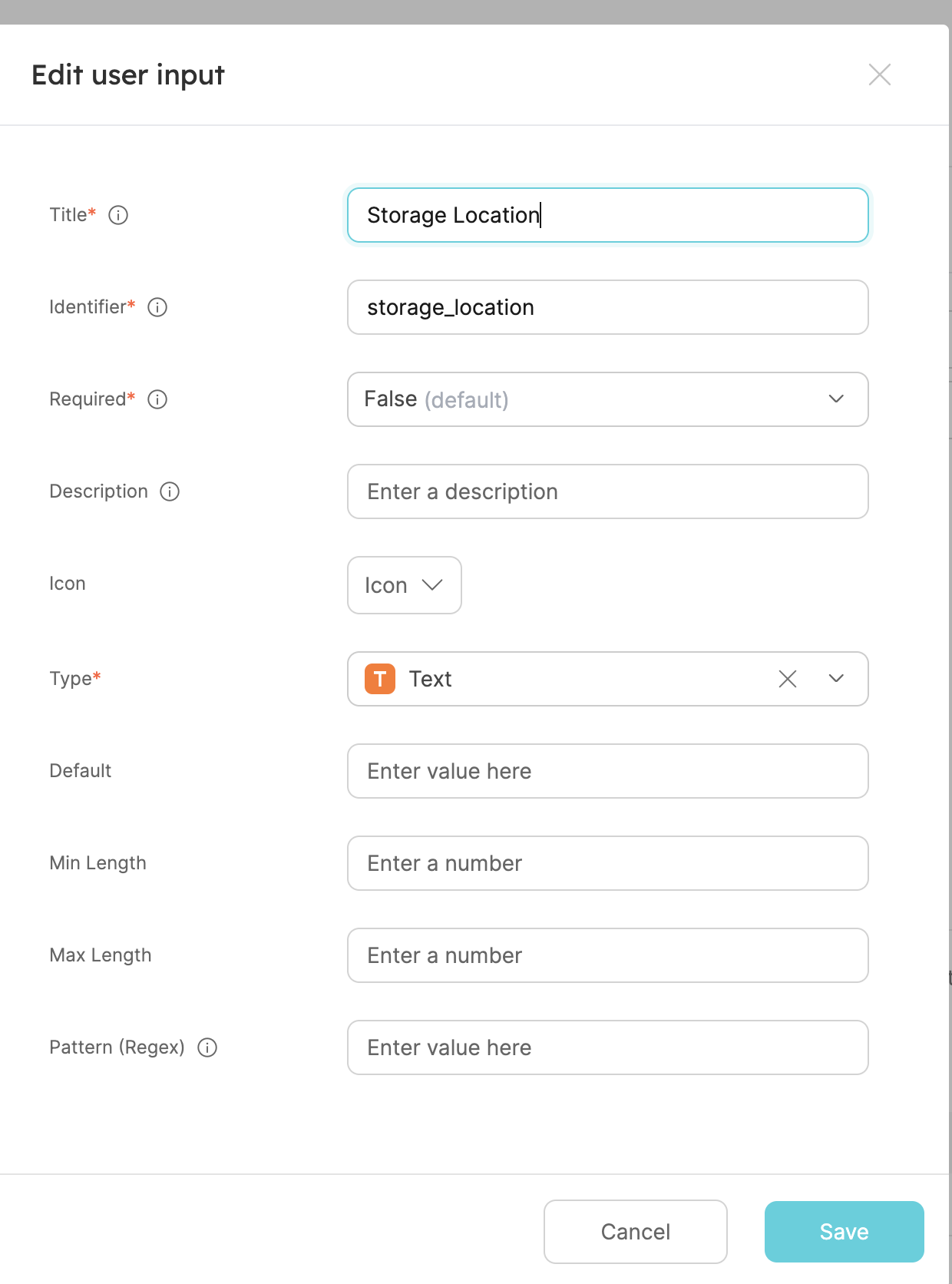
6.现在我们来定义动作的后端。选择 "运行 Jenkins 管道 "调用类型。
- 将
Webhook URL替换为你的 jenkins 作业 URL。 - 确保 URL 的格式为
http://JENKINS_URL/generic-webhook-trigger/invoke?token=<JOB_TOKEN>。 - 点击 `下一步
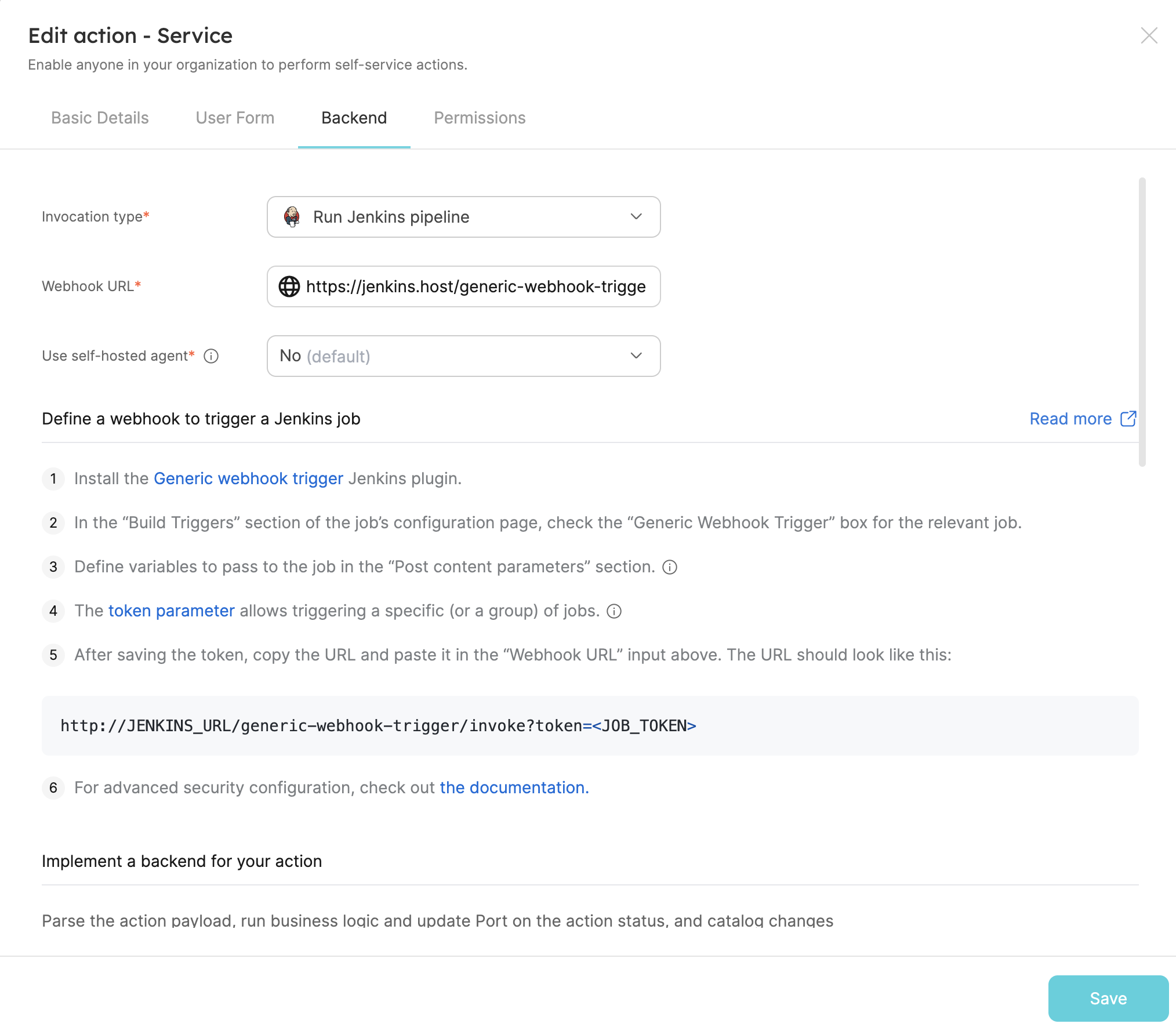
:::tip 了解更多有关 Jenkins 调用类型的信息here :
7.最后一步是自定义操作权限。为简单��起见,我们将被用于默认设置。更多信息,请参阅permissions 页面。单击 "创建"。
action的前端已准备就绪 🥳
设置action的后端
现在,我们要编写我们的操作将触发的 Jenkins Pipelines。
- 首先,让我们获取必要的 token 和 secrets:
- 登录GitHub tokens page ,创建一个具有
repo和admin:org作用域的个人访问令牌,并将其复制(从我们的 Pipelines 创建拉取请求需要此令牌) 。 -
-To get your Port API credentials go to your Port application, click on the
...button in the top right corner, and selectCredentials. Here you can view and copy yourCLIENT_IDandCLIENT_SECRET:2.将以下内容创建为 Jenkins 凭据: 1.使用 Username with password类型和 idport-credentials创建Port凭据。PORT_CLIENT_ID- Port客户端 ID。PORT_CLIENT_SECRET- Port客户端secret。
WEBHOOK_TOKEN- 网络钩子令牌,只有提供该令牌才能触发任务。GITHUB_TOKEN- 从上一步获得的个人访问令牌。 3.现在,我们将创建一个简单的.tf文件,作为新资源的模板:
- 登录GitHub tokens page ,创建一个具有
- 在 GitHub 仓库的
/templates/(路径应为/templates/create-azure-storage.tf)下创建一个名为create-azure-storage.tf的文件。 - 复制以下代码段并粘贴到文件内容中:
create-azure-storage.tf
resource "azurerm_storage_account" "storage_account" {
name = "{{ storage_name }}"
resource_group_name = "YourResourcesGroup" # replace this with one of your resource groups in your azure cloud acount
location = "{{ storage_location }}"
account_tier = "Standard"
account_replication_type = "LRS"
account_kind = "StorageV2"
}
在版本库根目录下添加 main.tf 文件。
main.tf
# Configure the Azure provider
terraform {
required_providers {
azurerm = {
source = "hashicorp/azurerm"
version = "~> 3.0.2"
}
}
required_version = ">= 1.1.0"
}
provider "azurerm" {
features {}
}
4.现在,让我们创建 Pipelines 文件:
1.Enable webhook trigger for a pipeline
2.Define variables for a pipeline 定义 STORAGE_NAME、STORAGE_LOCATION、REPO_URL 和 PORT_RUN_ID 变量。
3.Token Setup 定义令牌,使其与 Port Action 中配置的 JOB_TOKEN 匹配。
我们的 Pipelines 将由 3 个步骤组成,用于选定服务的存储库:
- 使用模板在
main.tf中添加一个资源块,并用动作输入的数据替换其变量。 - 在资源库中创建拉取请求以添加新资源。
- 向 Port 报告并记录操作结果。
在 Jenkins 管道中,请将以下片段作为其内容被用于:
Jenkins pipeline
import groovy.json.JsonSlurper
pipeline {
agent any
environment {
GITHUB_TOKEN = credentials("GITHUB_TOKEN")
NEW_BRANCH_PREFIX = 'infra/new-resource'
NEW_BRANCH_NAME = "${NEW_BRANCH_PREFIX}-${STORAGE_NAME}"
TEMPLATE_FILE = "templates/create-azure-storage.tf"
PORT_ACCESS_TOKEN = ""
REPO = ""
}
triggers {
GenericTrigger(
genericVariables: [
[key: 'STORAGE_NAME', value: '$.payload.properties.storage_name'],
[key: 'STORAGE_LOCATION', value: '$.payload.properties.storage_location'],
[key: 'REPO_URL', value: '$.payload.entity.properties.url'],
[key: 'PORT_RUN_ID', value: '$.context.runId']
],
causeString: 'Triggered by Port',
allowSeveralTriggersPerBuild: true,
regexpFilterExpression: '',
regexpFilterText: '',
printContributedVariables: true,
printPostContent: true
)
}
stages {
stage('Checkout') {
steps {
script {
def path = REPO_URL.substring(REPO_URL.indexOf("/") + 1);
def pathUrl = path.replace("/github.com/", "");
REPO = pathUrl
}
git branch: 'main', credentialsId: 'github', url: "[email protected]:${REPO}.git"
}
}
stage('Make Changes') {
steps {
script {
sh """cat ${TEMPLATE_FILE} | sed "s/{{ storage_name }}/${STORAGE_NAME}/g; s/{{ storage_location }}/${STORAGE_LOCATION}/g" >> main.tf"""
}
}
}
stage('Create Branch and Commit') {
steps {
script {
sh "git checkout -b ${NEW_BRANCH_NAME}"
sh "git commit -am 'Add a new resource block file'"
sh "git push origin ${NEW_BRANCH_NAME}"
}
}
}
stage('Create pull request') {
steps {
script {
repo = REPO
branch_name = NEW_BRANCH_NAME
base_branch = 'main'
title = 'New resource block ' + STORAGE_NAME
body = 'This pull request adds a new resource block to the project.'
createPullRequestCurl(repo, branch_name, base_branch, title, body)
}
}
}
stage('Get access token') {
steps {
withCredentials([usernamePassword(
credentialsId: 'port-credentials',
usernameVariable: 'PORT_CLIENT_ID',
passwordVariable: 'PORT_CLIENT_SECRET')]) {
script {
// Execute the curl command and capture the output
def result = sh(returnStdout: true, script: """
accessTokenPayload=\$(curl -X POST \
-H "Content-Type: application/json" \
-d '{"clientId": "${PORT_CLIENT_ID}", "clientSecret": "${PORT_CLIENT_SECRET}"}' \
-s "https://api.getport.io/v1/auth/access_token")
echo \$accessTokenPayload
""")
// Parse the JSON response using JsonSlurper
def jsonSlurper = new JsonSlurper()
def payloadJson = jsonSlurper.parseText(result.trim())
// Access the desired data from the payload
PORT_ACCESS_TOKEN = payloadJson.accessToken
}
}
}
}
stage('Notify Port') {
steps {
script {
def logs_report_response = sh(script: """
curl -X POST \
-H "Content-Type: application/json" \
-H "Authorization: Bearer ${PORT_ACCESS_TOKEN}" \
-d '{"message": "Created GitHub PR for new terraform resource ${STORAGE_NAME}"}"}' \
"https://api.getport.io/v1/actions/runs/$PORT_RUN_ID/logs"
""", returnStdout: true)
println(logs_report_response)
}
}
}
stage('Update Run Status') {
steps {
script {
def status_report_response = sh(script: """
curl -X PATCH \
-H "Content-Type: application/json" \
-H "Authorization: Bearer ${PORT_ACCESS_TOKEN}" \
-d '{"status":"SUCCESS", "message": {"run_status": "Jenkins CI/CD Run completed successfully!"}}' \
"https://api.getport.io/v1/actions/runs/${PORT_RUN_ID}"
""", returnStdout: true)
println(status_report_response)
}
}
}
}
post {
failure {
// Update Port Run failed.
script {
def status_report_response = sh(script: """
curl -X PATCH \
-H "Content-Type: application/json" \
-H "Authorization: Bearer ${PORT_ACCESS_TOKEN}" \
-d '{"status":"FAILURE", "message": {"run_status": "Failed to create azure resource ${STORAGE_NAME}"}}' \
"https://api.getport.io/v1/actions/runs/${PORT_RUN_ID}"
""", returnStdout: true)
println(status_report_response)
}
}
// Clean after build
always {
cleanWs(cleanWhenNotBuilt: false,
deleteDirs: true,
disableDeferredWipeout: false,
notFailBuild: true,
patterns: [[pattern: '.gitignore', type: 'INCLUDE'],
[pattern: '.propsfile', type: 'EXCLUDE']])
}
}
}
def createPullRequestCurl(repo, headBranch, baseBranch, title, body) {
curlCommand = "curl -X POST https://api.github.com/repos/$repo/pulls -H 'Authorization: Bearer ${GITHUB_TOKEN}' -d '{ \"head\": \"$headBranch\", \"base\": \"$baseBranch\", \"title\": \"$title\", \"body\": \"$body\", \"draft\": false }'"
try {
response = sh(script: curlCommand)
if (response.contains('201 Created')) {
println "Pull request created successfully"
} else {
println "Failed to create pull request"
println response
}
} catch (Exception e) {
println "Error occurred during CURL request: ${e.getMessage()}"
}
}
完成!操作已准备就绪 🚀
执行操作
创建操作后,该操作将出现在 Port 应用程序的 "自助服务 "选项卡下:
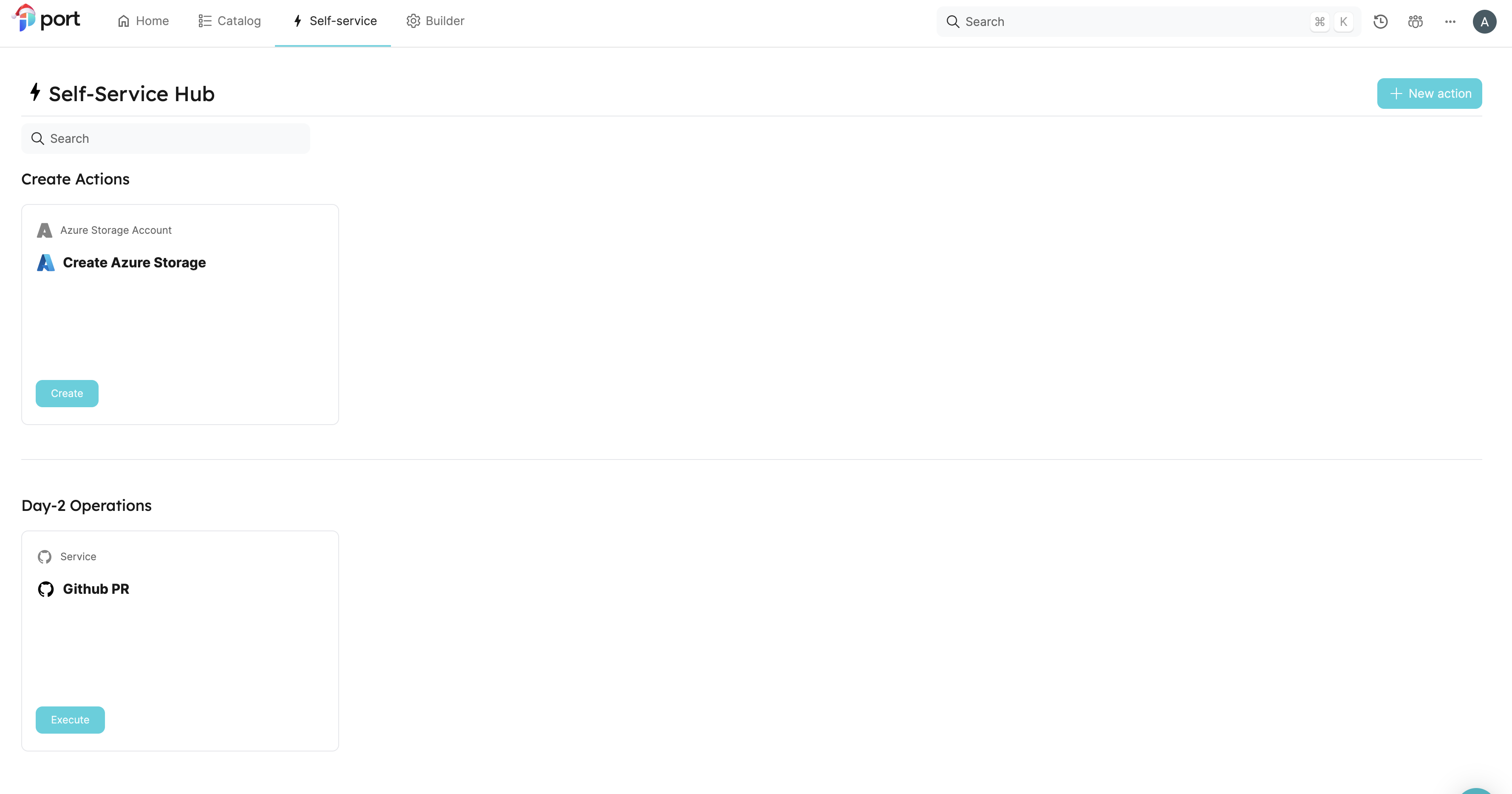
- 点击 "执行"。
- 输入 Azure 存储账户的名称和位置,从列表中选择任何服务,然后单击 "执行"。此时会弹出一个小窗口,点击 "查看详情":
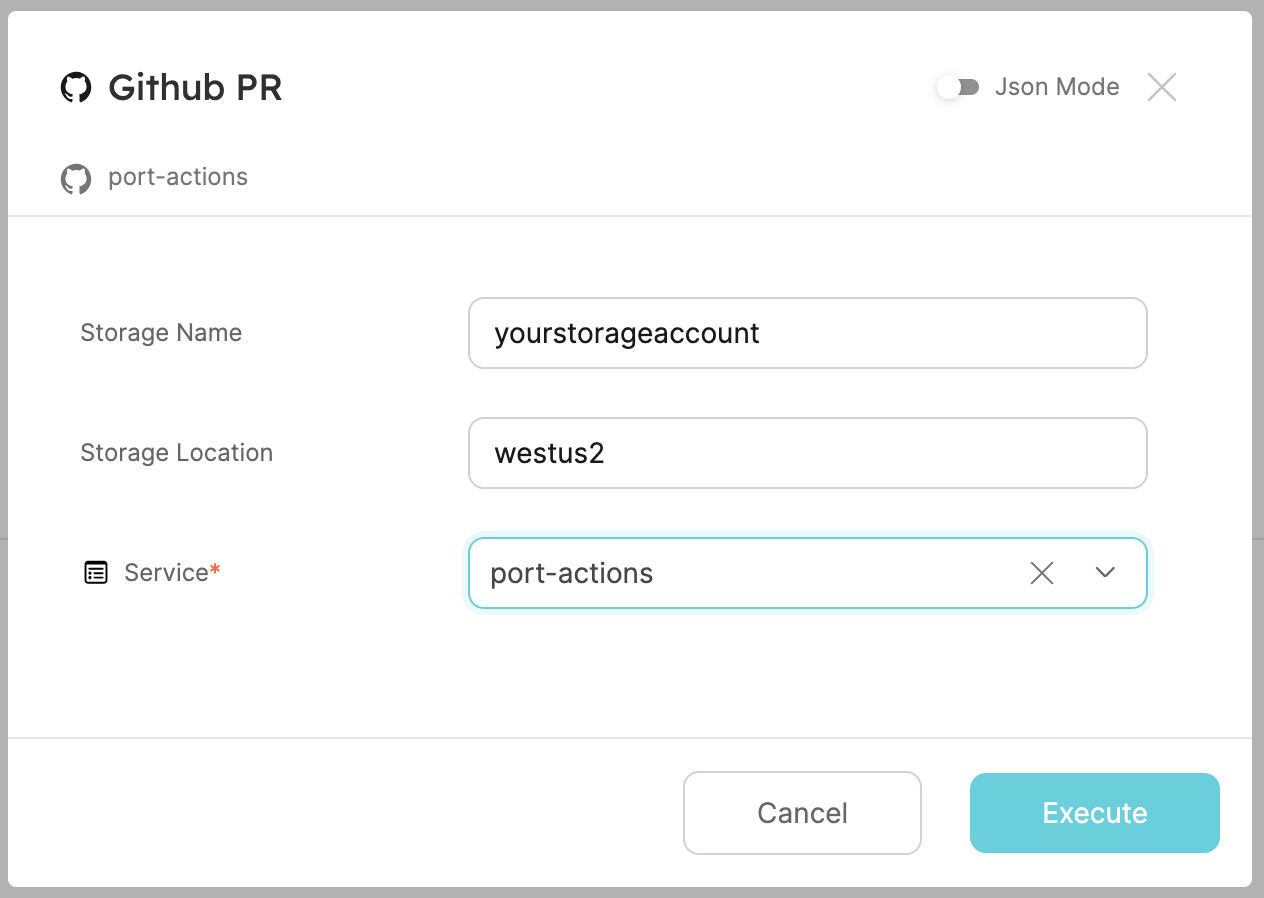

3.该页面提供了有关操作运行的详细信息。我们可以看到,后端返回了 "成功",拉取请求已成功创建:
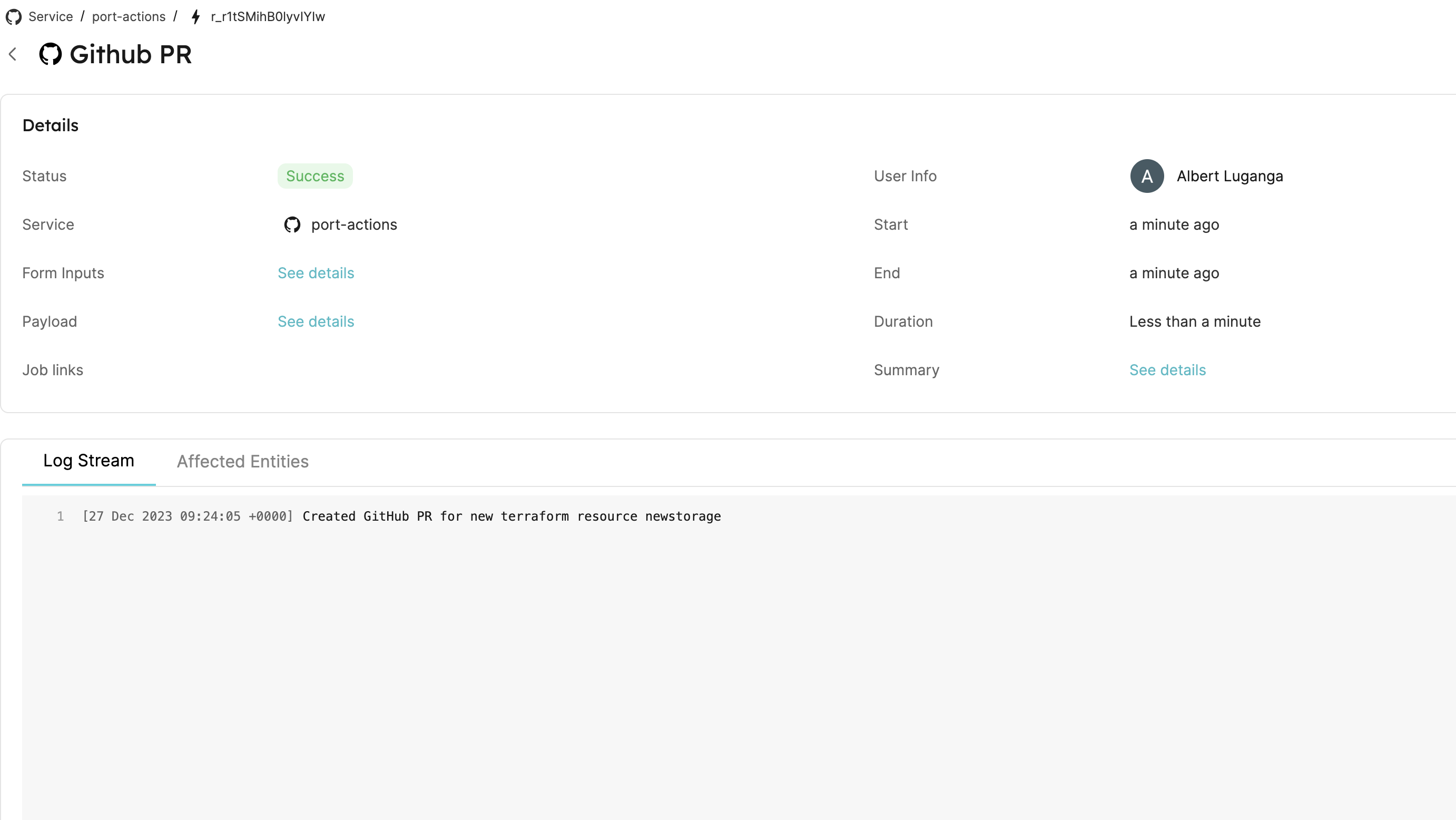
All done! You can now create PRs for your services directly from Port 💪🏽
更多相关指南和示例: